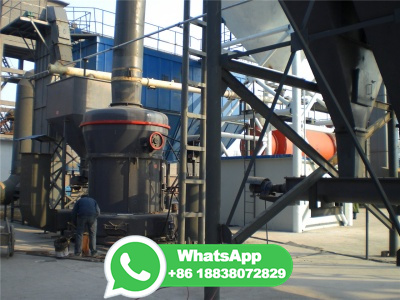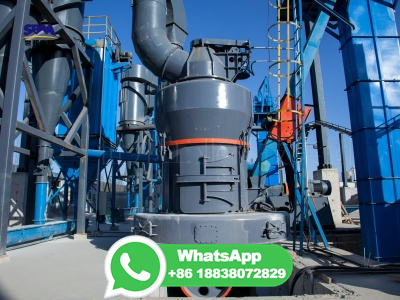
Much attention has been focused on reducing the use of petroleum products as fuels, so synthetic gas (Syngas) introduces a great opportunity for energy sustainable developments. Syngas is created either by gasification of plants biomass or waste products (carbonbased) pyrolysis. In principle, Syngas can be produced from any hydrocarbon feedstock. It mainly affects the combustion process in ...
WhatsApp: +86 18203695377
Library. Entrained Flow Gasifiers. In entrainedflow gasifiers, fine coal feed and the oxidant (air or oxygen) and/or steam are fed cocurrently to the gasifier. This results in the oxidant and steam surrounding or entraining the coal particles as they flow through the gasifier in a dense cloud. Entrainedflow gasifiers operate at high ...
WhatsApp: +86 18203695377
Gasification is a process that has many benefits and uses. It is a reliable technology that can be used to produce transportation fuels, electricity, and chemicals. Gasification is also environmentally and economically advantageous. It is a process that should be considered when looking for ways to recycle or dispose of waste.
WhatsApp: +86 18203695377
Pyrolysis is considered the first step in the processes of gasification or combustion. The process is used heavily in the chemical industry, for example, to produce ethylene, many forms of carbon, and other chemicals from petroleum, coal, and even wood, or to produce coke from coal.
WhatsApp: +86 18203695377
The figure of gasification reactions and transformations illustrated the concept of coal gasification, and noted resulting composition of syngas. This can vary significantly depending on the feedstock and the gasification process involved; however typically syngas is 30 to 60% carbon monoxide (CO), 25 to 30% hydrogen (H 2), 0 to 5% methane (CH 4), 5 to 15% carbon dioxide (CO 2), plus a lesser ...
WhatsApp: +86 18203695377
The Lurgi gasifier is a pressurized, dryash, moving bed gasifier that produces syngas from lump coal, steam, and oxygen as an oxidant. A high ratio of steam to oxygen helps moderate the temperature such that the ash does not melt, but rather is removed as dry ash. More reactive feedstocks are preferred due to the relatively lowtemperature ...
WhatsApp: +86 18203695377
Definition of AE event with the dead time. Full size image. ... Su, F. Q. et al. Evaluation of coal combustion zone and gas energy recovery for underground coal gasification (UCG) process.
WhatsApp: +86 18203695377
type of gasifier has often been used to gasify coal. What Is the Gasification Medium? The simplest gasification process uses air as the reactive agent (as shown in Figure 4 on page 6), which converts the excess char into a low energy syngas (142209 Btu/ft. 3) consisting mainly of hydrogen and carbon monoxide diluted with nitrogen from the air.
WhatsApp: +86 18203695377
The syngas composition depends significantly, as show in Tables 6, 7, and 8, on the gasification process and the coal rank. Each gasification technology has its own gasifier design with a specific chemical reaction and operating conditions. Coals have different constituents and chemical and physical properties.
WhatsApp: +86 18203695377
gasification definition: 1. a process that changes plants or coal into gas: 2. a process that changes plants or coal into.. Learn more.
WhatsApp: +86 18203695377
Catalytic coal gasification is being developed as a more efficient and less costly approach to producing methane from coal. With a potassium catalyst all the reactions can take place at one temperature, so that endothermic and exothermic reactions can be integrated in a single reactor. A key aspect of the concept involves continuous recycling ...
WhatsApp: +86 18203695377
Gasification One means of converting coal to an alternate form of energy is gasification. In this process, coal is combined with oxygen and steam to produce a combustible gas, waste gases, char, and ash. The more than 70 coal gasification systems available or being developed in 1979 can be classified by
WhatsApp: +86 18203695377
Gasification is the process of converting organic materials (anything containing carbon) into a gas form known as Syngas or Producer Gas. Gasification has been around for hundreds of years. Initially developed to produce town gas for lighting and cooking in the 1800s, this was replaced by electricity and natural gas. ...
WhatsApp: +86 18203695377
Gasification is a process that uses heat, pressure, and steam to convert materials directly into a gas composed primarily of carbon monoxide and hydrogen. Gasification technologies differ in many aspects but rely on four key engineering factors: •. Gasification reactor atmosphere (level of oxygen or air content); •.
WhatsApp: +86 18203695377
Syngas Compositions, Cold Gas and Carbon Conversion Efficiencies for Different Coal Gasification Processes and all Coal Ranks June 2020 DOI: /
WhatsApp: +86 18203695377
Coal liquefaction is a process of converting coal into liquid hydrocarbons: liquid fuels and process is often known as "Coal to X" or "Carbon to X", where X can be many different hydrocarbonbased products. However, the most common process chain is "Coal to Liquid Fuels" (CTL).
WhatsApp: +86 18203695377
Coal gasification is recognized as the core technology of clean coal utilization that exhibits significant advantages in hydrogenrich syngas production and CO2 emission reduction. This review briefly discusses the recent research progress on various coal gasification techniques, including conventional coal gasification (fixed bed, fluidized bed, and entrained bed gasification) and relatively ...
WhatsApp: +86 18203695377
The meaning of GASIFICATION is conversion into gas; especially : conversion of coal into natural gas.
WhatsApp: +86 18203695377
Catalytic Gasification. Catalysts are commonly used in the chemical and petroleum industries to increase reaction rates, sometimes making certain previously unachievable products possible. Acids, through donated protons (H+), are common reaction catalysts, especially in organic chemistry (catalysts take part in the reaction but are not consumed).
WhatsApp: +86 18203695377
The process flowsheet of the coal gasification process in a downdraft fixedbed gasifier using air as an oxidant is shown in Figure 1. The details of unit operations and Aspen Plus blocks are given in Table S1 in the Supporting Information file. Figure 1 ... As per the definition of ER used in the present study, increasing the ER value or ...
WhatsApp: +86 18203695377
Gasification is a technological process that can convert any carbonaceous (carbonbased) raw material such as coal into fuel gas, also known as synthesis gas (syngas for short). Gasification occurs in a gasifier, generally a high temperature/pressure vessel where oxygen (or air) and steam are directly contacted with the coal or other feed material causing a series of chemical reactions to ...
WhatsApp: +86 18203695377
Hydrogasification Hydrogasification is gasification in a hydrogenrich has been used since the 1930s primarily for the production of synthetic natural gas (SNG) from coal or other carbonaceous variation on this technique is called steam hydrogasification which uses both steam and hydrogen for gasification.
WhatsApp: +86 18203695377
Gasification enables coal, biomass, MSW, and waste plasticstoliquids by producing syngas followed by FischerTropsch synthesis to generate liquid hydrocarbonbased transportation fuels. Syngasbased fuel synthesis technologies are commercialized at largescale, but improvements are needed for these technologies to be viable for smaller ...
WhatsApp: +86 18203695377
Coal gasification is a process by which coal is converted into a fuel gas rich in hydrogen and carbon monoxide. The process was first developed in about 1780 and was widely commercialized by the early 1900s. Before natural gas became widely available in the 1940s, many North American and European cities used coal gas as a heating and lighting ...
WhatsApp: +86 18203695377
Gasification is an indirect combustion of solid and liquid biomass by converting them to combustive syngas. Gasification is an alternative process for the traditional combustion, in which the emission of dust and toxic gases can be minimized. In this chapter, a comparison of these two biomasstoheat conversion processes applied on biomass is presented in term of environmental impacts and ...
WhatsApp: +86 18203695377
Underground Coal Gasification (UCG) takes advantage of the same chemical reactions of coal to produce product gases, as those occurring in conventional gasifier reactors. The main difference is that in UCG the underground coal seam itself becomes the reactor, so that the gasification of the coal takes place underground instead of in a manufactured gasification vessel at the Obviously ...
WhatsApp: +86 18203695377
What is gasification? We can understand gasification by first understanding combustion. Combustion, or burning, is the complete oxidation of a fuel such as coal, a process that produces heat and ...
WhatsApp: +86 18203695377